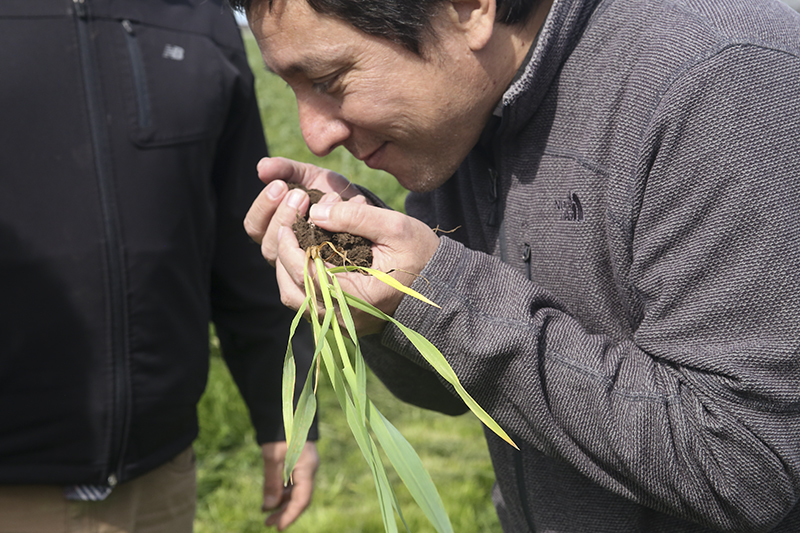
Regenerative Agriculture Soil Lab and Farm Tour at Chico State
by Sheryl Karas, RAI staff
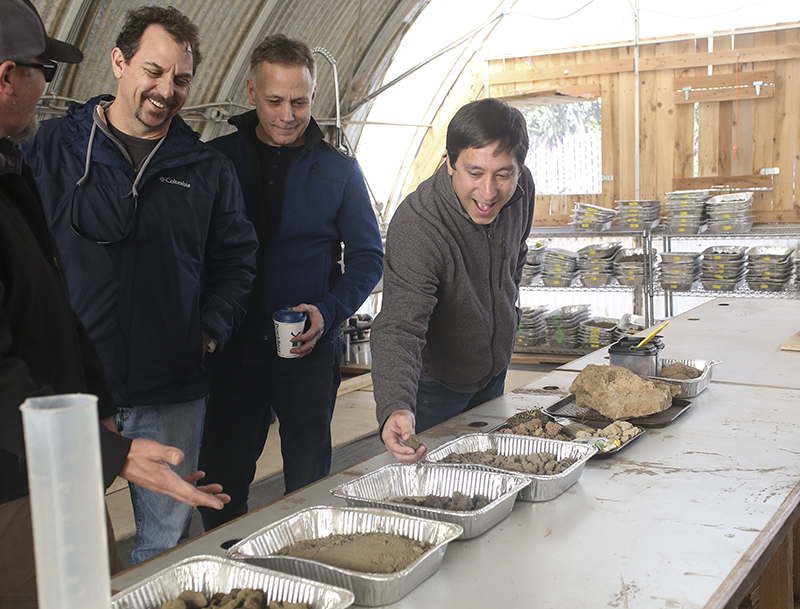
From left to right: Professor Garrett Liles with NRCS representatives Hudson Minshew and Tony Rolfes and visiting soil scientist Santiago Utsumi.
On Thursday, March 14th, the Regenerative Agriculture Initiative (RAI) was pleased to host State Soil Scientist Tony Rolfes and State Agronomist Hudson Minshew, both with the Natural Resources Conservation Services (NRCS), (opens in new window)a division of the U.S. Department of Agriculture. They joined us, along with visiting Soil Scientist Santiago Utsumi(opens in new window), at the University Farm to see the new Regenerative Agriculture Demonstration Lab (RAD-Lab)(opens in new window) that the NRCS helped fund along with the CSU Agricultural Research Institute (ARI)(opens in new window) and to get a tour of the Chico State Farm.
Keeping the soil healthy and regenerating soil that has been eroded or depleted in quality is a primary mission(opens in new window) of the NRCS. Because of conventional farming practices and other factors, topsoil worldwide has been eroding at an alarming rate. The U.N. estimates that if nothing changes we have no more than 60 years of topsoil(opens in new window) left. The NRCS advocates for several regenerative farming techniques such as no-till, cover cropping and diverse rotations that greatly increase the soil’s organic matter and improves microbial activity. This results in farmers sequestering more carbon (which combats climate change), increasing water infiltration, and improving wildlife and pollinator habitat, while enjoying higher profits and frequently greater yields.
The Chico State Farm, including the RAD-Lab, will serve as a demonstration site for best practices for Regenerative Agriculture. It is also set to provide services for the greater community to test for physical, chemical, and biological indicators of soil health. The intention is to make access to analytical services and data more affordable for farmers to further encourage their ability to successfully adopt regenerative practices and to aggregate the data needed to document it.
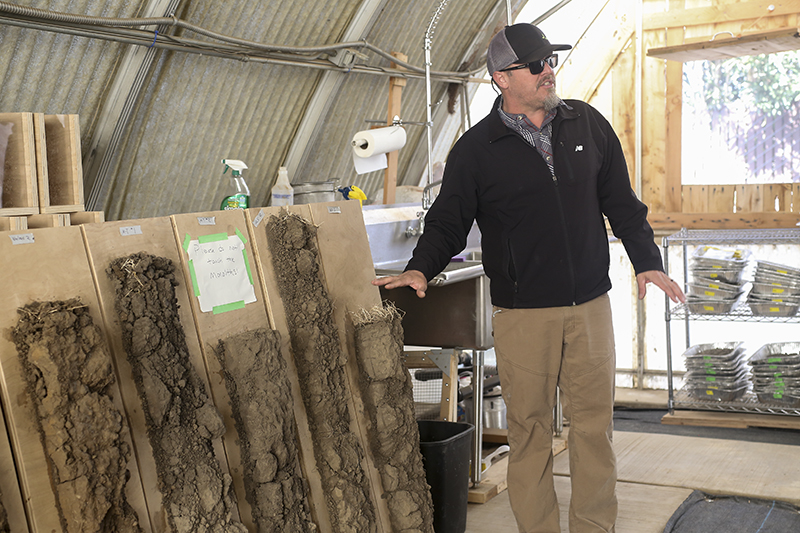
Touring the Demonstration Farm and Soil Lab
Touring the soil processing facilities and Chico State Farm gave plenty of opportunities to demonstrate the value of this joint venture. RAI co-founder, soil scientist, and lead for the RAD-Lab Dr. Garrett Liles led the tour along with RAI director Dr. Cindy Daley.
We started in the Soil Processing Area. Dr. Liles showed off the variety of equipment that will be used and demonstrated the results of soil sampling already underway. Of particular interest were the soil monoliths, and vertical slabs cut from dug-outs in a variety of locations in the region. They clearly showed the difference between frequently tilled soil at the top of each slab contrasted with the healthier soil structure present in the untilled soil further down. Participants also found soil samples in pans from local regeneratively managed farms of great interest.
We then went on to tour the Farm itself and visit several sites where research is taking place including the Aquaponics Unit(opens in new window), and several fields showing the results of conventional farming versus various levels of regenerative management. In some cases, the research had just begun but in others, the differences were striking and quite easy to see. For example, soil dug up from the conventionally managed almond orchard was hard-planed, pale in color, and had little or no organic matter in it. Dr. Liles noted that water tended to run off in this area. But in the field right next to it kept covered with a multi-species cover crop, water tended to sink into the soil where it could be accessed in times of drought. Tony Rolfes also pointed out that this darker, healthier, more fertile soil had a particular texture and feel as well as a distinctive scent that was absent in the soil under the almond trees.
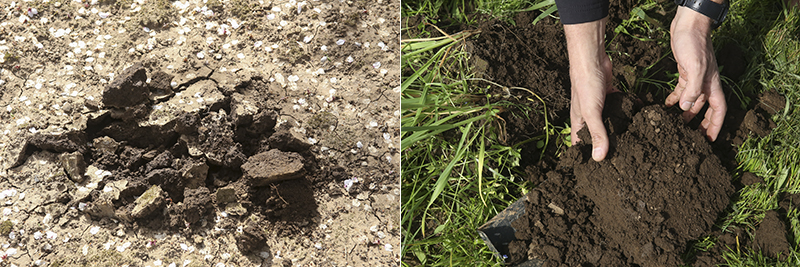
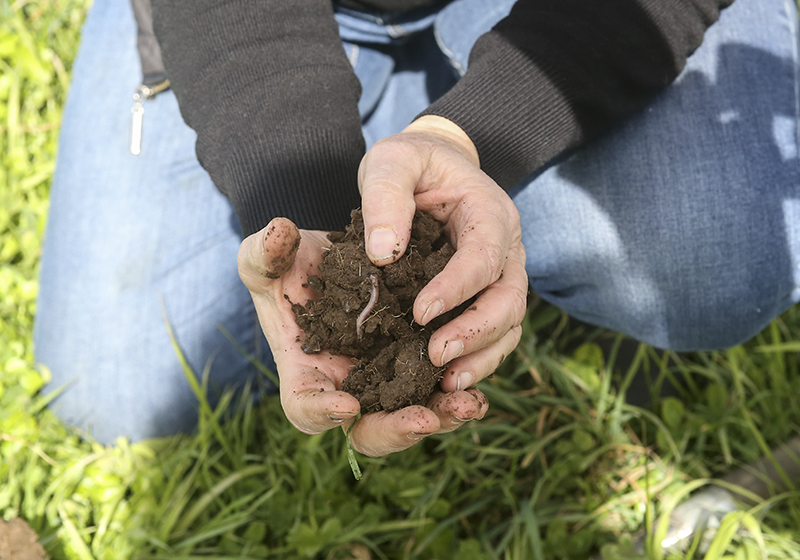
The group also toured a more recently tilled field that was now planted with a monoculture cover crop. The soil in that field was already starting to regenerate even though the effect was not as dramatic as the field that had not been tilled and was covered with multiple species. At the end of the tour we visited the pasture next to the Dairy Unit. That soil was untilled and covered with multi-species cover crops that cows like for forage. It was also treated to the manure left by the cows while they ate. That soil was the healthiest of all. It was noticeably dark, fragrant, and filled with earthworms. Participants were quite enthusiastic about that discovery as earthworms are one of the best indicators of soil health.
Director Cindy Daley pointed out that the importance of this being a demonstration farm could not be emphasized enough. Farmers are usually reluctant to take risks and make significant changes. But when they can see for themselves the difference a simple practice like adding a cover crop can do, they are much more willing to try it in their own fields.
